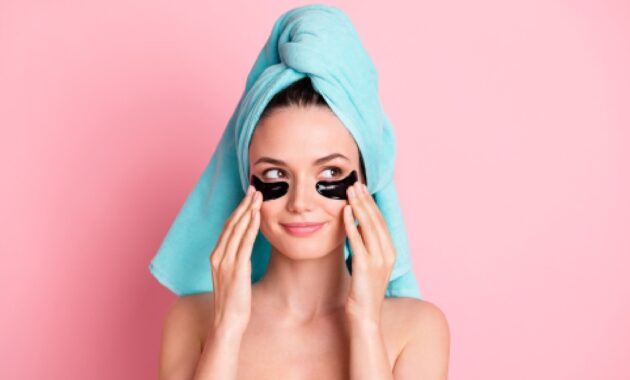Our eyes often get all the attention, and we also try to enhance their beauty by applying cosmetics. While you shower your eyes with a lot of love, don’t forget the skin under your eyes. That part is more sensitive and thinner than other parts of the face as there is less fat underneath it. When you get tired or start ageing, the signs start showing up under your eyes. But some may have thinner skin under the eyes than others. There are a lot of causes that lead to thin skin under the eyes.
Causes of thin skin under eyes
Thin skin under the eyes can be due to many factors. Dr Pooja Aggarwal, Consultant of Dermatology, Artemis Hospital, Gurugram says that intrinsic factors include genetics and the natural ageing process. Some people have their genes to thank for thinner skin. Also, the production of collagen and elastin (the proteins that provide structural support to the skin) decreases as we age, leading to thinner skin. Extrinsic factors encompass external factors that contribute to skin thinning. These may include:
• Prolonged sun exposure can damage collagen and elastin fiber, causing the skin to thin over time.
• Smoking reduces blood flow to the skin and impairs collagen production, accelerating skin thinning.
• Inadequate hydration can make the skin lose its plumpness, making it appear thinner.
• A diet lacking in essential nutrients like vitamins C and E can affect skin health and thickness.
• Chronic allergies can cause inflammation and fluid retention, making the skin under the eyes appear thinner.
• Lack of sleep, excessive alcohol consumption and stress can contribute to skin thinning.

Symptoms of thin skin under eyes
You don’t see a lot of fat under your eyes, so this area may seem less elastic. Here are some of the common symptoms of think skin under eyes you must know:
1. Dark circles
Thin skin allows the underlying blood vessels to show through, leading to the appearance of dark circles under the eyes, says the expert.
2. Visible blood vessels
Due to the transparency of thin skin, small blood vessels (capillaries) may become visible, giving a bluish or reddish appearance.
3. Wrinkles and fine lines
Thin skin is more prone to developing wrinkles and fine lines, making you look older than your age.
Select Topics of your interest and let us customize your feed.
PERSONALISE NOW
4. Puffiness
Thin skin can contribute to puffiness under the eyes, as the delicate tissues may not provide adequate support to prevent fluid buildup.
5. Hollowness
In some cases, thin skin can accentuate the hollow areas under the eyes, making them look sunken.
Ways to treat thin skin under the eyes
To prevent and address thin skin under your eyes, it’s essential to protect your skin. Here’s what you can do:
1. Sun protection
Whether you are indoors or outdoors, apply a broad-spectrum sunscreen with SPF 30 or higher every day. Sunglasses can also to help shield the delicate under-eye area from harmful UV rays.

2. Hydration
Keep your skin well-hydrated by drinking plenty of water and using a gentle and hydrating eye cream containing ingredients like hyaluronic acid.
3. Topical retinoids
Over-the-counter or prescription retinoid creams can stimulate collagen production and help to thicken the skin over time. But use them as directed by a dermatologist.
4. Vitamin C serum
Vitamin C can boost collagen synthesis and also brighten your skin, says Dr Aggarwal, so apply a vitamin C serum to the under-eye area.
5. Gentle skincare
Be gentle while cleansing and moisturising the under-eye area. Avoid harsh rubbing or tugging, as they can damage the delicate skin.
6. Eye masks
Cold compresses or eye masks can help to reduce puffiness and improve blood circulation, temporarily reducing the appearance of thin skin.
7. Topical peptides
Look for eye creams with peptides like palmitoyl pentapeptide-4, which can stimulate collagen production and improve skin thickness, suggests the expert.
You also need to get adequate sleep, manage stress, and maintain a healthy lifestyle by eating a balanced diet and regularly exercising.
#Thin #skin #eyes #tips #rid
